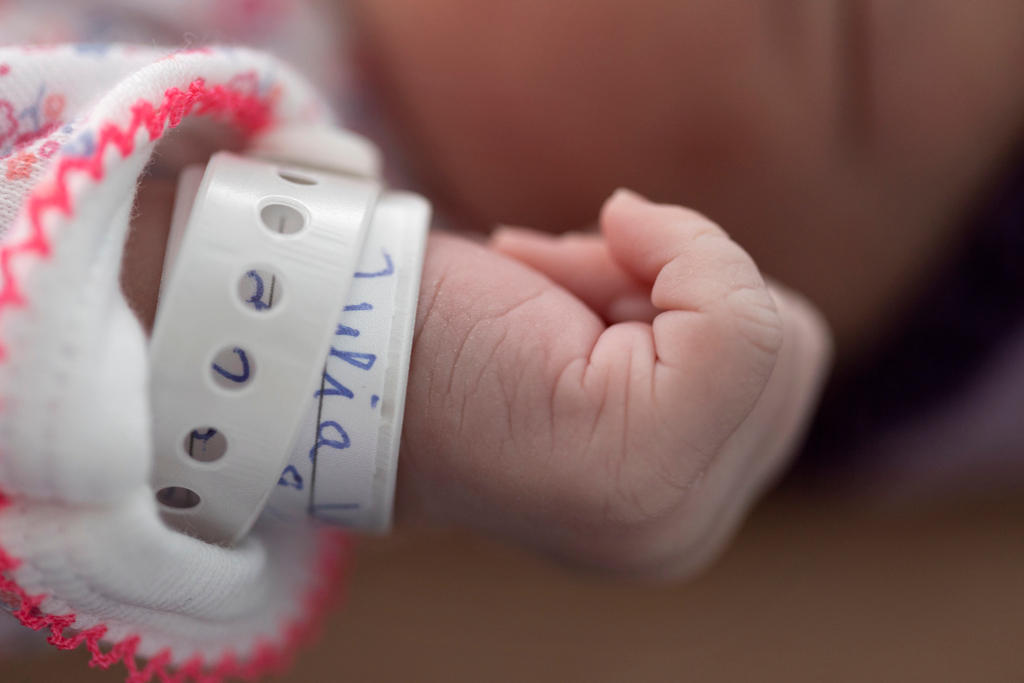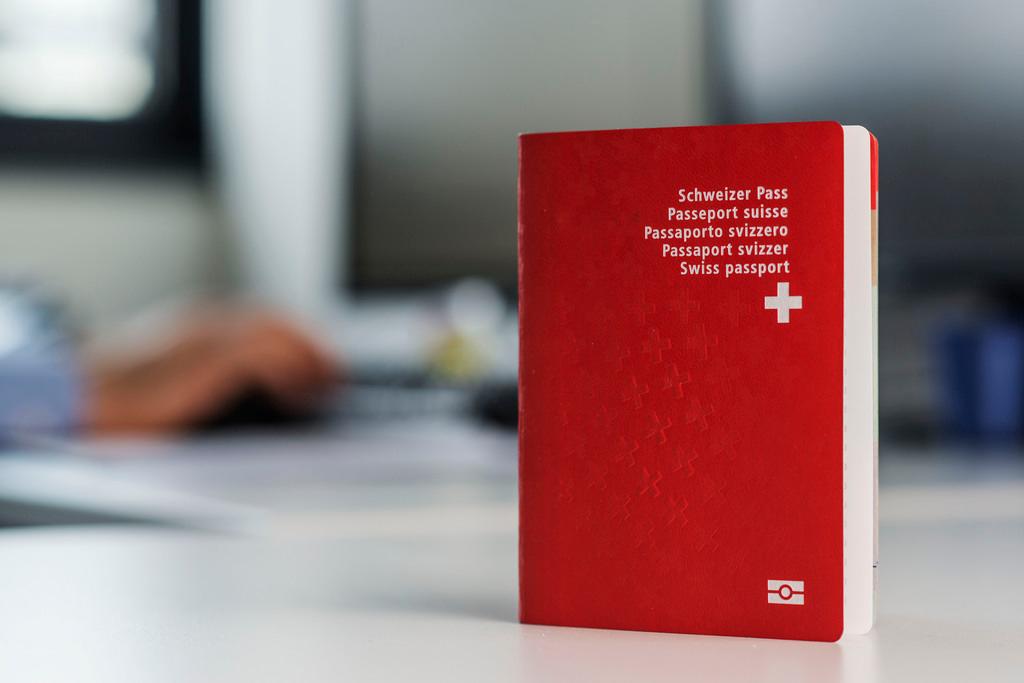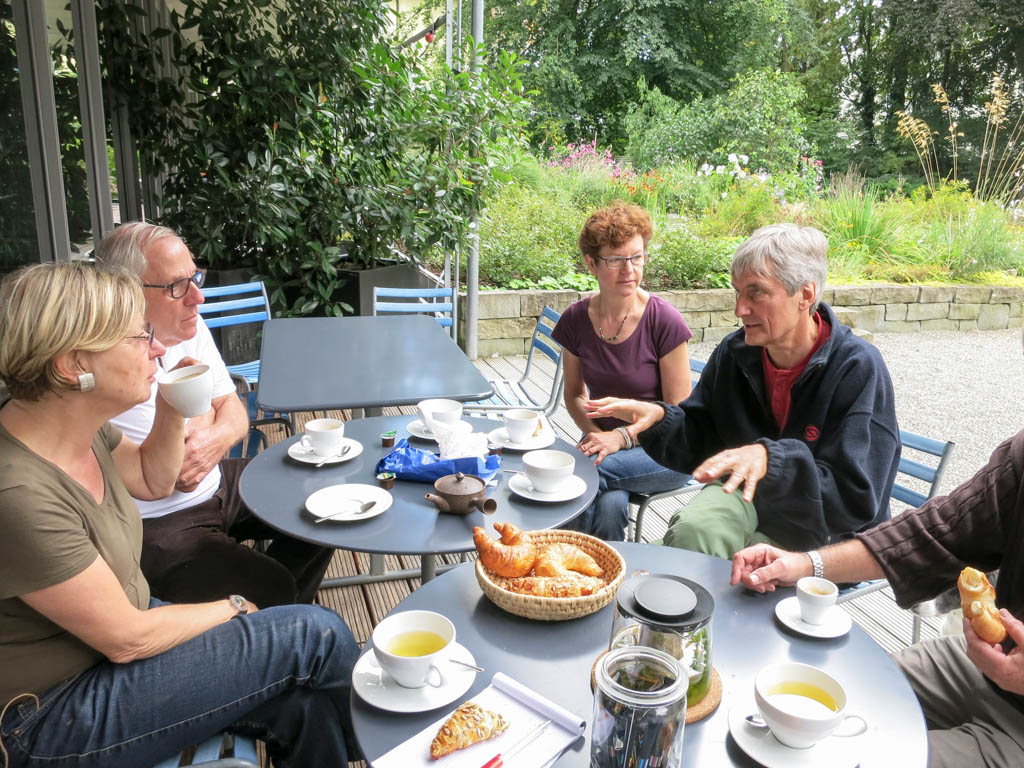A Swiss girl born today can expect to live into the 22nd century

Last year the number of foreigners in Switzerland hit two million, adoptions and same-sex partnerships continued to go down and centenarians and mothers aged over 50 continued to go up. The government has released its annual demographic treasure trove.
The permanent resident population at the end of 2015 totalled 8,327,126, according to “Switzerland’s population 2015”External link, published on Tuesday by the Federal Statistical Office. This figure – double what it was in 1932 – comprises 4,121,471 men and 4,205,655 women.
The only canton to record a population decline was Uri (-0.1%), the other 25 all grew, with the sharpest increase reported in canton Zug (+1.9%).
The number of foreign permanent residents reached the two million mark, reaching 2,048,667 million (25% of the total). Of these, 396,619 were born in Switzerland.
Two-thirds of those born abroad came from a European Union/European Free Trade Association (EFTA) country, with the most common countries of origin being Italy (311,742), Germany (300,691), Portugal (267,474), France (122,970), Kosovo (106,879), Spain (82,334), Serbia (71,260), Turkey (69,215), Macedonia (64,448) and Britain (41,766).

More
Defining the 25% foreign population in Switzerland
The cantons with the highest proportion of foreign permanent residents are Geneva (41%), Basel City (35%) and Vaud (34%). Appenzell Inner Rhoden and Uri have the lowest proportion, with 11%.
Last year, 40,689 people acquired a Swiss passport – 32,317 from Europe, 3,415 from Asia, 2,336 from Africa and 2,488 from the Americas. The remaining 133 were in the “Oceania/stateless/no indication” category. Of the total, 43% were aged under 30.
As for Swiss citizens who live abroad, three-fifths of the total of 762,930 live in Europe, mostly in neighbouring France, Germany and Italy.
Births and adoptions
Swiss obstetricians had their hands full last year with 86,559 live births – up from 78,458 in 2000 but down from the boom year of 1970, when 99,216 babies were born.
Women are increasingly postponing the age of first childbirth, currently 30.7 years, and the number of mothers aged over 40 has more than doubled since 1970 (rising from 1.8% to 4.1%).
In 1970, 3,562 births were to teenage mothers – almost ten times last year’s figure (393). At the other end of the spectrum, 31 mothers were aged over 50 last year, up from three in 2000 and one in 1990.
The average number of children per woman remained stable. However, there was a difference between Swiss and foreign women. The latter show a slightly higher fertility rate (1.86 compared with 1.54 for Swiss women).
The percentage of births outside marriage rose from 3.8% in 1970 to 22.9% in 2015.
The number of adoptions fell from 1,583 in 1980 to 329 in 2015. Of these babies, 132 were Swiss.
The report said the decline in the number of adoptions within and outside the family could be explained by a number of hypotheses, “including changes in child protection law, the decline in unwanted pregnancies and better acceptance of single mothers in today’s society”.
Life expectancy and dying
How long will these babies live? The girls can expect to make it to 84.9 (i.e. dying in the 22nd century!) and the boys to 80.7, putting Switzerland in second place globally behind Japan, according to the World Health OrganizationExternal link (WTO).
However, a woman who was 65 last year can expect another 22.2 years, whereas a 65-year-old man will have to make do with just 19.2 years.
The number of people aged 100 or over is also steadily rising. At the end of 2015 there were 1,562 centenarians living in Switzerland, most being women.

More
Ageing trends go global
No one can go on for ever, however, and last year saw 67,606 deaths. But while the number of deaths increased, there have been significant changes in the age structure of the deceased. For example, infant mortality has dropped sharply since 1970, while the number of deaths in people over 65 has increased.
Last year, 340 babies died in their first year, giving an infant mortality rate (deaths of children in the first year of life per 1,000 live births) of 4.9. This compares with ten for Europe and 32 globally, according to the WHOExternal link.
The report said most deaths had a small number of causes – cardiovascular disease, cancer, dementia, diseases of the respiratory tract, as well as accidents and violent deaths – but the relative importance of the causes of death varied depending on age.
“In the first two years of life, hereditary diseases are the predominant cause of death. Between two and 15, deaths are very rare and are spread across a variety of causes. Between 16 and approximately 34, accidents and suicide are the prevailing causes. From around the age of 40, cancer is the most frequent cause of death. After the age of 80, cardiovascular diseases are most common.”
In 2015, almost half of the deceased in Switzerland were 85 or older, the report noted.
Marriage and divorce
Last year saw 41,437 couples tie the knot. Of these, 70% were marrying for the first time.
The average age at first marriage is steadily increasing. In 1970, it was 26.5 for men and 24.1 for women; today it is 32 for men and 30 for women.
Since the mid-1980s there has been a rise in the number of marriages in which at least one of the spouses is foreign. In 2015, this concerned more than half (52%) of all marriages.
Since the Same-Sex Partnership Act came into force in 2007, same-sex couples have been able to register their partnership at a civil register office. Last year 701 couples did so, down from 2,004 in 2007.
It doesn’t always work out, however, and last year 16,960 couples officially split up, with divorces occurring most frequently in the seventh year of marriage (5.6%) – the seven-year itch proving true in Switzerland. That said, an increasing number of couples (29.4%) are getting divorced who have been married for 20 years or longer.

In compliance with the JTI standards
More: SWI swissinfo.ch certified by the Journalism Trust Initiative












You can find an overview of ongoing debates with our journalists here . Please join us!
If you want to start a conversation about a topic raised in this article or want to report factual errors, email us at english@swissinfo.ch.